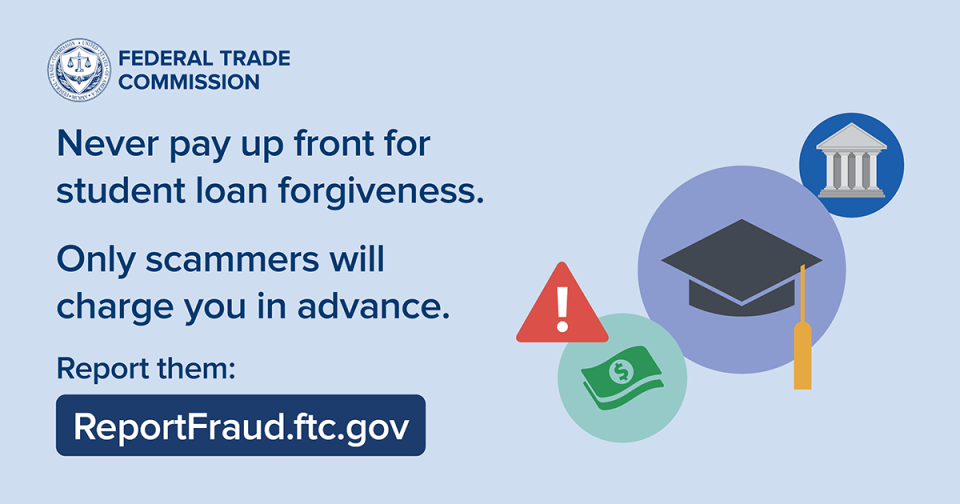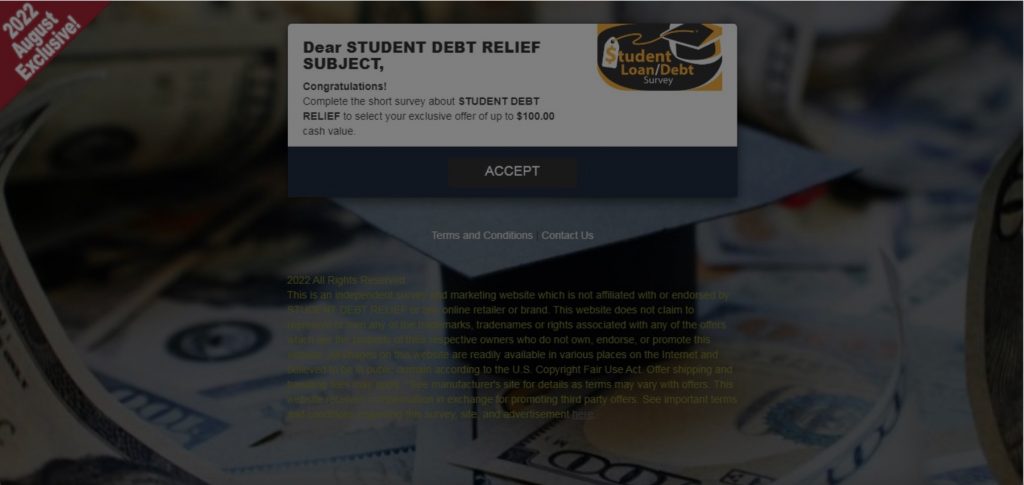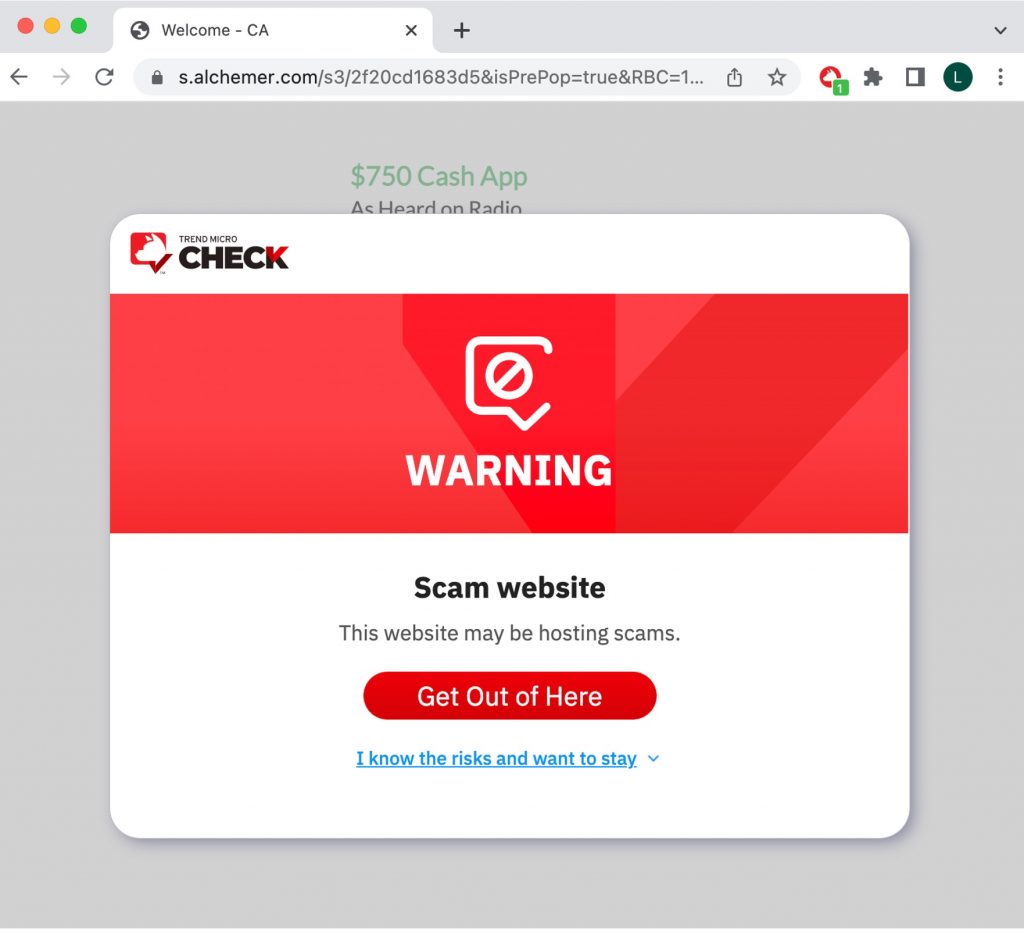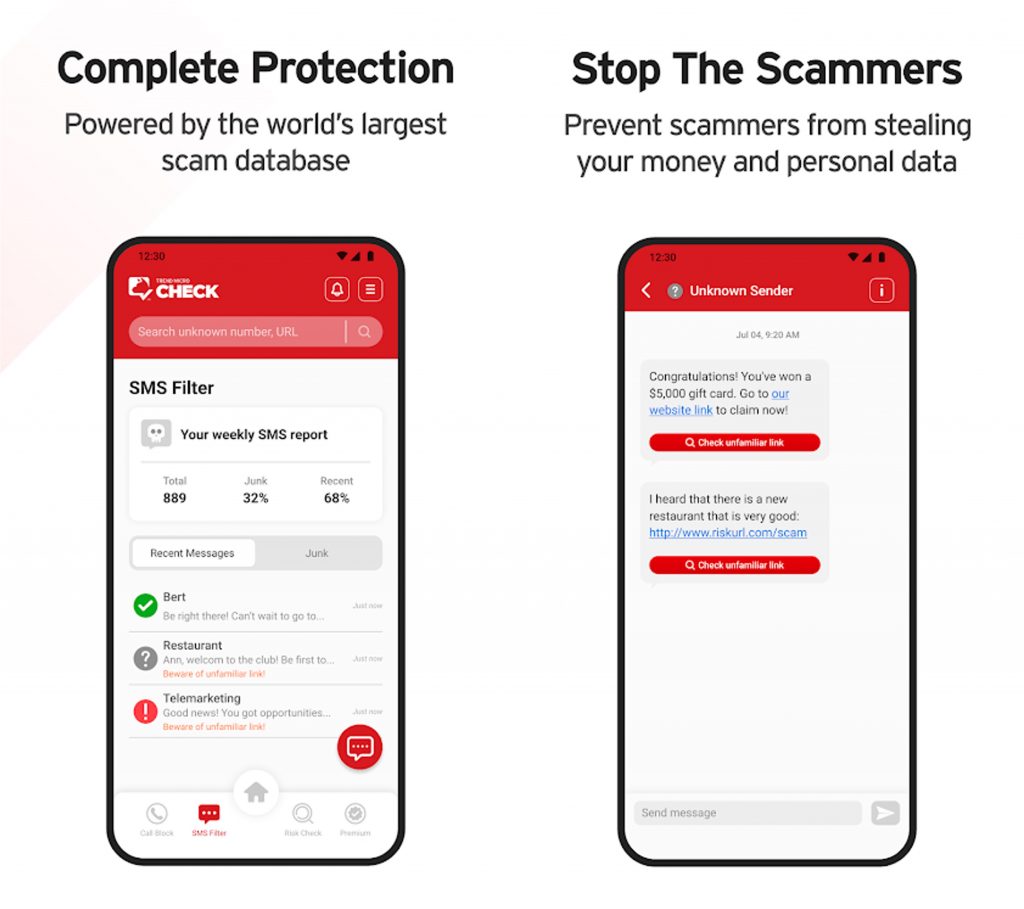Our readers have no doubt been following the recent press coverage on President Biden’s student loan debt forgiveness program. The announcement means that millions of Americans could see as much as $20,000 of their student loan debt simply wiped away. It’s great news in the midst of difficult times, and many students and former students will rightly feel relieved. The problem is that scammers are having a field day with yet another line of attack.
Student Loan Scams

The Federal Trade Commission (FTC) and other agencies are hard at work combatting student loan scams and debunking general disinformation on the topic. The following are the three most common scam attempts you might encounter:
- Paying a fee to have complicated forms filled out for you.
- Paying a fee to have loans cancelled or reduced.
- Advertisements for fake debt relief and student debt surveys.
Student Loan Scam Examples
The following are two examples of student loan scams we’ve found in the last week, with both coming under the third category above. The first is a phishing email, in which the would-be victim is directed to follow the link and complete a survey. (Note the convoluted email address — official email addresses NEVER look like this.) The second is a phishing webpage that a would-be victim has probably stumbled upon — again being asked to complete a survey.
In both cases the survey is fake, designed purely to obtain your personal information and/or money. Note as well, grammatical mistakes, informal language, and the lack of personalized correspondence / address.


A major red flag is that these services will demand payment. The fact is that the U.S. Department of Education and official loan services will, AT NO COST, help you to:
- Lower monthly loan payments
- Alter repayment plans
- Consolidate multiple loans
- Take repayment breaks during education or unemployment
- Check if you qualify for loan forgiveness
Malicious scam URLs to be on the lookout for:
- habito05[.]workisboring[.]com
- congregation[.]za[.]com
- www[.]jumbozmarket[.]com
- t6[.]lolameraz[.]com
Protecting Against Student Loan Scams
1. Up-front fees are a red flag
It’s illegal for student debt relief companies to charge you before providing a service.
2. Quick loan forgiveness is a scam
Anyone who isn’t the Department of Education and guarantees your eligibility for debt forgiveness is a scammer. Likewise if they claim to be able to do so quicker than official guidelines state.
3. Don’t trust a Department of Education logo
Anyone with editing software can produce a convincing logo or seal. Scammers will use such tactics to convince you of their legitimacy.
4. Don’t be rushed into a decision
Pressuring would-be victims into a decision/payment is a classic tool of scammers. Such requests will be “time-sensitive”, like missing a deadline. Official bodies will NEVER pressure you or attempt to scare you like this.
5. Don’t provide your Student Aid ID
Never share your account credentials such as your Student Aid ID or Social Security number (SSN). Doing so will put you in real danger of identity theft. See our previous articles to help guard against this threat.
If you fall victim to a student loans scam, you must immediately report it to the FTC. Time will be of the essence when it comes to getting your money back — and bringing scammers to justice. For further steps to take, see the FTC’s own dedicated page here: What To Do if You Were Scammed.
Protect Yourself with Trend Micro Check
- Double-check people’s contact details — and URLs.
- Reach out to official websites and support pages directly for help if in doubt.
- NEVER use links or buttons from unknown sources! Use Trend Micro Check to detect scams with ease: Trend Micro Check is an all-in-one browser extension and mobile app for detecting scams, phishing attacks, malware, and dangerous links — and it’s FREE!
After you’ve pinned the Trend Micro Check extension, it will block dangerous sites automatically! (Available on Safari, Google Chrome, and Microsoft Edge).

You can also download the Trend Micro Check mobile app for 24/7 automatic scam and spam detection and filtering. (Available for Android and iOS).

Check out this page for more information on Trend Micro Check.
Given you’ll be required to enter personal information on these kinds of platforms, ID Security will also ensure you’re never the victim of a data breach.
Be safe out there, loan users! As ever, if you’ve found this article an interesting and/or helpful read, please do SHARE it with friends and family to help keep the online community secure and protected.
